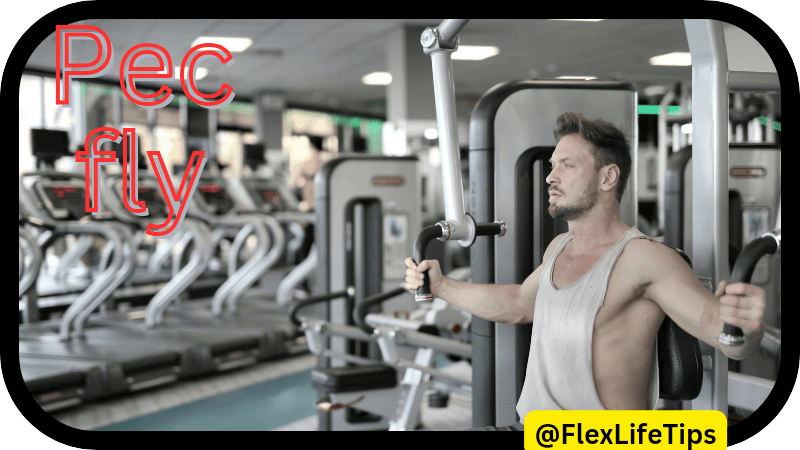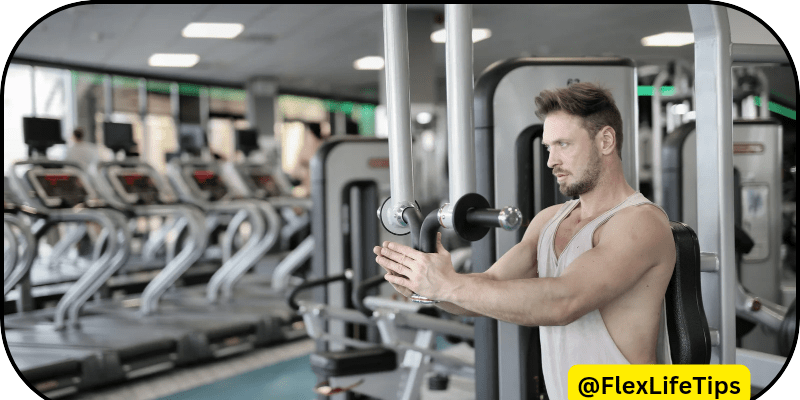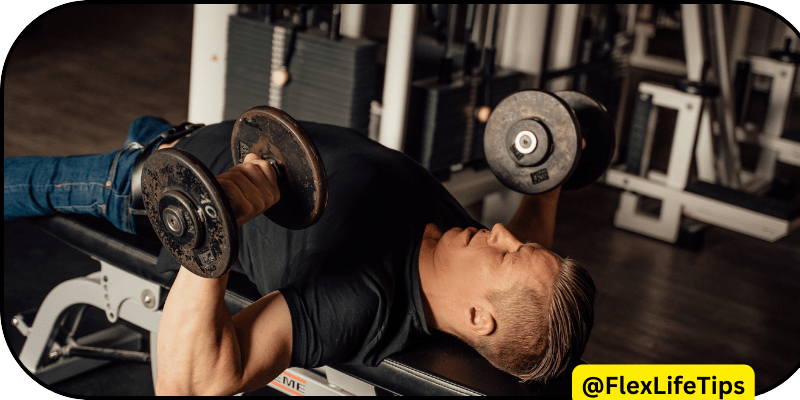Unlock the best way to build chest muscles with our comprehensive guide! Learn effective exercises and essential tips for sculpting a strong and impressive chest. Perfect for beginners and seasoned gym enthusiasts alike, this resource will help you achieve your fitness goals with confidence.
Introduction
Hey there! So, you want to get a strong and muscular chest, right? Well, you’re in the right place! Building chest muscles is a common goal for a lot of people who want to feel stronger and look better. But, it’s not just about lifting weights randomly or doing any old workout. There’s a smart way to do it that gets you the best results.
In this easy-to-follow guide, we’ll show you how to build up your chest muscles the right way. We’ll talk about simple exercises like push-ups and bench presses, as well as some tricks to make those exercises work even better for you. And don’t worry if you’re new to all of this – we’ll explain everything in a way that’s easy to understand.
Ranking the Top 10 Chest Exercises for Maximum Muscle Growth
Push-up: Pushing Beyond Limits

The Accessibility Advantage
Push-ups are a great way to work out because you don’t need any special equipment. You can do them anywhere, anytime, using just your body weight. This makes them super accessible for everyone, whether you’re at home, at the gym, or even outdoors.
Tension Generation and Cardio Intensity
When you do push-ups, they help build strength in your chest muscles. However, if you do too many push-ups without a break, it can feel more like a cardio exercise because it gets your heart pumping fast. This can be good for your overall fitness, but it might not target your chest muscles as effectively if you’re aiming for muscle growth.
Strategies for Optimal Muscle Stimulation
To get the most out of push-ups for muscle growth, it’s important to push yourself to do as many reps as you can until your chest muscles are tired. This means going until you can’t do any more push-ups. If you find push-ups too easy, you can make them harder by elevating your feet or adding weight to your back.
Rating: 3/5 Stars
Overall, push-ups are a good exercise for building chest muscles, but they have limitations. They’re easy to do anywhere, which is great, but they might not provide enough muscle stimulation for maximum growth compared to other exercises. That’s why they get a rating of 3 out of 5 stars.
Dumbbell Stretch Iso Hold: Building Strength Through Isometric Resistance
Targeted Muscle Engagement
The dumbbell stretch iso hold is a fancy name for a simple exercise where you hold a pair of dumbbells in a certain position for some time. This exercise mainly targets your chest muscles. By holding the dumbbells in a stretched position for around 60 seconds, you’re forcing your chest muscles to work hard to maintain that position, which helps to strengthen and tone them.
Progressive Overload Potential
One cool thing about the dumbbell stretch iso hold is that you can easily make it harder over time. You can start with lighter weights and gradually increase the weight as your chest muscles get stronger. This is called progressive overload, and it’s a key principle for muscle growth. By constantly challenging your muscles with heavier weights, you can keep making gains in strength and size.
Incorporating Weighted Stretching Techniques
Another benefit of the dumbbell stretch iso hold is that it involves weighted stretching. This means that you’re not only working your muscles against resistance but also stretching them out at the same time. Some studies suggest that this type of stretching can be beneficial for muscle growth, especially when done after a workout when your muscles are already fatigued.
Rating: 3/5 Stars
While the dumbbell stretch iso hold is a useful exercise for building chest strength, it does have its limitations. It mainly works your muscles isometrically, which means they don’t go through a full range of motion. This may not be as effective for muscle growth as exercises that involve both stretching and contracting the muscles. That’s why it gets a rating of 3 out of 5 stars.
Pec Fly Machine: Harnessing Even Tension for Superior Muscle Activation

Exploring Machine Variations
The pec fly machine is a piece of gym equipment that’s great for working out your chest muscles. There are different variations of this machine, but they all essentially do the same thing: they target your chest muscles by simulating the motion of a fly exercise. Some machines are set up for a flat-fly motion, while others may have a slight incline to target different areas of the chest.
Balancing Progressive Overload and Muscle Engagement
One challenge with the pec fly machine is figuring out how to increase the weight or resistance over time without sacrificing proper muscle engagement. As you get stronger, you’ll need to add more weight to continue making progress. However, if you add too much weight too quickly, you might find it difficult to maintain proper form and feel the muscles working effectively. It’s important to find the right balance between increasing weight and maintaining good muscle engagement.
Leveraging Drop Sets for Intensification
One strategy for intensifying your workout with the pec fly machine is to use drop sets. A drop set is when you perform a set of exercises to failure, then immediately reduce the weight and continue performing more reps until failure again. This helps to increase the overall intensity of your workout and can lead to greater muscle growth over time.
Rating: 3.5/5 Stars
Overall, the pec fly machine is a solid exercise choice for building chest muscles. It provides even tension throughout the range of motion, which can help to maximize muscle activation. However, it’s important to be mindful of proper form and to gradually increase the weight over time to avoid injury and ensure continued progress. That’s why it receives a rating of 3.5 out of 5 stars.
Cable Crossover Ladder: Tailoring Chest Workouts for Comprehensive Development
Segmenting Chest Regions with Cable Variation
The cable crossover ladder is an excellent exercise for targeting different areas of the chest muscles. By adjusting the height of the cables, you can focus on specific regions of the chest during each set. For example, setting the cables low targets the upper chest, while setting them at chest height targets the mid-chest, and setting them high targets the lower chest. This variation allows for comprehensive development of the entire chest area in one workout.
Maintaining Constant Tension throughout Movements
One of the key advantages of the cable crossover ladder is its ability to maintain constant tension throughout the entire range of motion. Unlike some other chest exercises where tension may decrease at certain points, the cables provide resistance from start to finish, ensuring that your chest muscles are continuously engaged. This constant tension is crucial for maximizing muscle stimulation and promoting growth.
Rating: 3.5/5 Stars
Overall, the cable crossover ladder is a versatile exercise that allows for tailored chest workouts and comprehensive muscle development. By adjusting the cable height, you can target different regions of the chest, while the constant tension provided by the cables ensures effective muscle stimulation. While it may not be as effective for progressive overload as other exercises, its versatility and muscle engagement earn it a rating of 3.5 out of 5 stars.
The Dip: Maximizing Tension Generation with Bodyweight Movements

Unparalleled Stretch and Squeeze Dynamics
The dip is a fantastic exercise for working out your chest muscles using just your body weight. It involves lowering your body down between two parallel bars and then pushing yourself back up again. One of the key benefits of the dip is that it provides an unparalleled stretch at the bottom of the movement and a strong squeeze at the top. This means that your chest muscles are working hard throughout the entire range of motion, which can lead to impressive muscle growth.
Addressing Challenges and Ensuring Proper Form
While the dip is a highly effective exercise, it does come with some challenges. One common issue is maintaining proper form, especially as you start to fatigue. It’s important to keep your body upright, your shoulders down and back, and your elbows tucked in close to your body throughout the movement. This ensures that your chest muscles are doing the majority of the work and helps to prevent injury.
Rating: 4/5 Stars
Overall, the dip is a top-notch exercise for building chest muscles. It provides a great combination of stretch and squeeze dynamics, which can lead to superior muscle activation and growth. While it does require some practice to master proper form, once you get the hang of it, the dip can become a staple in your chest workout routine. That’s why it earns a rating of 4 out of 5 stars.
Deficit Push-up Plus Bands: Enhancing Conventional Push-up Dynamics

Capitalizing on Added Stretch and Tension
The deficit push-up plus bands is a modified version of the conventional push-up that adds extra challenge and muscle engagement. By performing push-ups with your hands elevated on plates or platforms, you increase the depth of the push-up, allowing for a greater stretch in the chest muscles at the bottom of the movement. Additionally, by incorporating resistance bands looped around your back and held under your shoulder blades, you add tension to the push-up, making it more challenging and activating the chest muscles even further.
Implementing Band Resistance for Optimal Muscle Activation
The use of resistance bands in the deficit push-up plus bands exercise provides several benefits for muscle activation and development. The bands add resistance to the upward phase of the push-up, forcing the chest muscles to work harder against the tension. This increased resistance helps to stimulate muscle growth and strength gains. Furthermore, the bands also provide a unique form of resistance that challenges the stabilizing muscles, enhancing overall muscle activation and engagement.
Rating: 4/5 Stars
Overall, the deficit push-up plus bands exercise is an effective way to enhance the dynamics of the conventional push-up and maximize chest muscle activation. By capitalizing on added stretch and tension and implementing band resistance, this exercise offers a challenging yet rewarding workout experience. Its ability to target the chest muscles effectively earns it a rating of 4 out of 5 stars.
Incline Dumbbell Press: Targeting Upper Chest Hypertrophy with Precision

Scientific Insights on Incline Bench Benefits
The incline dumbbell press is a powerful exercise specifically designed to target the upper chest muscles, aiding in their hypertrophy or growth. Scientific research has shown that performing exercises on an incline bench leads to superior development of the upper chest compared to flat or decline benches. This is because the inclined position places more emphasis on the upper portion of the chest, stimulating muscle fibers in that area more effectively. By incorporating the incline dumbbell press into your workout routine, you can strategically target the upper chest for enhanced growth and definition.
Overcoming Challenges for Effective Execution
While the incline dumbbell press offers numerous benefits for upper chest development, it may present some challenges during execution. Maneuvering heavy dumbbells into position can be cumbersome, and the effort required to lift them may cause fatigue before the exercise even begins. However, by selecting an appropriate weight and focusing on maintaining proper form, these challenges can be overcome. Additionally, utilizing a spotter or adjustable incline bench can help facilitate smoother execution of the exercise, ensuring optimal muscle engagement and minimizing the risk of injury.
Rating: 4/5 Stars
In conclusion, the incline dumbbell press is a valuable addition to any chest workout routine, offering targeted stimulation for upper chest hypertrophy. Despite some potential challenges, the exercise’s ability to effectively engage the upper chest muscles earns it a rating of 4 out of 5 stars. Incorporating this exercise into your training regimen can help you achieve greater muscle development and overall chest strength.
Cable Press Around: Unveiling a Novel Approach to Isolated Pec Activation

Maximizing Range of Motion and Muscle Contraction
The cable press around is a unique exercise that targets the chest muscles with precision. Unlike traditional cable fly exercises where the hands stop short of touching, the cable press around allows for a full range of motion, ensuring maximum contraction of the pecs. By extending the movement until the hands meet, you activate more muscle fibers in the chest, leading to enhanced muscle engagement and growth. This extended range of motion also helps to fully stretch the chest muscles, promoting greater flexibility and mobility.
Customizing Resistance for Individualized Progression
One of the key advantages of the cable press around is its versatility in resistance customization. By adjusting the weight stack or selecting different cable attachments, individuals can tailor the resistance to their specific strength levels and training goals. This allows for progressive overload, where individuals can gradually increase the resistance over time to continue challenging their muscles and promoting growth. Additionally, the unilateral nature of the exercise allows for focused pec activation, ensuring balanced muscle development and minimizing potential muscle imbalances.
Rating: 4.5/5 Stars
In summary, the cable press around offers a novel approach to isolated pec activation, providing benefits such as maximized range of motion and customizable resistance. Due to its effectiveness in targeting the chest muscles and promoting individualized progression, it receives a high rating of 4.5 out of 5 stars. Incorporating the cable press around into your chest workout routine can help you achieve greater muscle development and overall chest strength.
Machine Chest Press: Leveraging Stability for Unmatched Muscle Connection
Emphasizing Pec Engagement with Controlled Movements
The machine chest press is a powerful exercise that prioritizes pec (chest muscle) engagement by providing a stable platform for controlled movements. Unlike free weight exercises where stability can be a challenge, the machine chest press eliminates the need for stabilizing muscles to focus solely on contracting the chest muscles. This controlled environment allows individuals to maintain proper form and technique throughout the exercise, ensuring maximal activation of the pecs with each repetition.
Balancing Stabilization and Isolation for Optimal Results
One of the key benefits of the machine chest press is its ability to balance stabilization and isolation for optimal results. While free weight exercises require individuals to stabilize the weight throughout the movement, the machine chest press offers a fixed path of motion, allowing individuals to isolate and target the chest muscles more effectively. This focused activation of the pecs helps individuals achieve greater muscle hypertrophy and strength gains over time.
Rating: 4.5/5 Stars
Overall, the machine chest press is highly effective in leveraging stability for unmatched muscle connection. Its emphasis on pec engagement and ability to balance stabilization and isolation make it a valuable addition to any chest workout routine. Therefore, it receives a rating of 4.5 out of 5 stars for its ability to promote optimal chest muscle development and strength. Incorporating the machine chest press into your training regimen can lead to significant improvements in chest aesthetics and overall upper body strength.
The Bench Press: Reigning Supreme as the Ultimate Chest Builder

Analyzing Bench Press Effectiveness Across Key Criteria
The bench press stands out as the ultimate chest-building exercise due to its effectiveness across several important criteria. First and foremost, it applies high tension to the entire chest muscle throughout its full range of motion. This means that the pecs are actively engaged from the bottom of the movement to the top, ensuring comprehensive muscle stimulation.
Secondly, the bench press offers exceptional potential for progressive overload. With the ability to incrementally increase weight, individuals can continuously challenge their chest muscles to adapt and grow stronger over time. This progressive overload is essential for driving muscle growth and strength gains.
Additionally, the bench press is incredibly accessible, as it can be performed in most gyms with basic equipment – a bench and a barbell. This accessibility ensures that individuals of all fitness levels can incorporate the bench press into their training routines without any barriers.
Addressing Common Misconceptions and Optimizing Performance
Despite its undeniable effectiveness, the bench press is sometimes subject to misconceptions. One such misconception is that it limits the range of motion, particularly at the bottom of the movement. However, research indicates that this limitation is often exaggerated, and the bench press still provides significant benefits for chest development.
Another misconception is that the pump achieved during the bench press is the primary indicator of muscle growth. While the pump may feel satisfying, it’s mechanical tension – the force exerted on the muscle fibers – that drives muscle hypertrophy. Understanding this distinction helps individuals focus on the most critical aspect of muscle development.
Rating: 5/5 Stars
Given its unparalleled effectiveness, accessibility, and potential for progressive overload, the bench press receives a perfect rating of 5 out of 5 stars. Incorporating the bench press into a chest workout routine can lead to significant improvements in chest muscle size, strength, and overall upper body development. As the cornerstone of chest training, the bench press remains unrivaled in its ability to sculpt a powerful and well-developed chest.
2. Exercises to Avoid: Understanding Limitations and Alternatives
Standing Plate Press: Grappling with Gravity and Limited Muscle Engagement
The standing plate press, while offering some benefits, comes with limitations that affect its effectiveness as a chest-building exercise.
Challenges with Gravity and Limited Muscle Engagement
One significant challenge of the standing plate press is that it primarily targets the shoulders and triceps rather than effectively engaging the chest muscles. This limitation arises because the exercise involves pushing a weight overhead while standing, which places greater emphasis on the deltoids and triceps for shoulder stabilization and pressing power. As a result, the chest muscles receive limited stimulation during this movement.
Furthermore, the standing position reduces the range of motion available for chest engagement compared to exercises performed lying on a bench. Without the support of a bench, individuals may struggle to maintain proper form and control throughout the movement, leading to less effective muscle activation.
Rating: 1/5 Stars
Considering these limitations and its reduced effectiveness in targeting the chest muscles, the standing plate press receives a rating of 1 out of 5 stars. While it may provide some benefit for overall shoulder and triceps development, it falls short as a primary exercise for chest hypertrophy. Individuals seeking optimal chest growth and strength are advised to prioritize other exercises that offer greater chest muscle engagement and stimulus.
Alternating One Arm Dumbbell Press: Balancing Challenges and Efficacy
The alternating one-arm dumbbell press offers a unique challenge, but its effectiveness for chest development is limited.
Challenges and Efficacy
This exercise involves pressing dumbbells overhead, alternating between each arm. While it does engage the chest muscles to some extent, the emphasis is often placed more on shoulder stabilization and triceps strength, particularly as individuals must work to balance the weight overhead.
One challenge with this exercise is the potential for muscle imbalances between the left and right sides of the body. Because each arm is pressed individually, there’s a risk that one side may become stronger or more developed than the other, leading to asymmetry.
Additionally, the alternating nature of the movement can compromise overall tension and stability, which may reduce the effectiveness of the exercise in fully stimulating the chest muscles. Proper form and control become crucial to ensure that the chest muscles are adequately engaged throughout the movement.
Rating: 1.5/5 Stars
Given these challenges and limitations in effectively targeting the chest muscles, the alternating one-arm dumbbell press receives a rating of 1.5 out of 5 stars. While it can be a useful accessory exercise for shoulder and triceps development, it may not be the most efficient choice for those primarily seeking chest hypertrophy and strength gains.
Dumbbell Pullover: Dispelling Misconceptions and Redirecting Focus
The dumbbell pullover, often misunderstood, receives a low rating due to its limited effectiveness for chest development.
Misconceptions and Focus
This exercise involves lying on a bench lowering a dumbbell behind the head and then bringing it back up, engaging primarily the muscles of the upper body and core. While some people believe it targets the chest muscles effectively, it emphasizes the muscles of the back and shoulders more.
One common misconception is that the dumbbell pullover stretches and works the chest muscles deeply. However, research suggests that it primarily engages the latissimus dorsi, the large muscles of the back, along with the triceps and shoulders, rather than the chest.
Redirecting focus from the chest to the back and shoulders is important for understanding the true purpose of this exercise. While it can still be valuable for overall upper body strength and stability, it may not provide the chest-specific benefits that some individuals seek.
Rating: 1.5/5 Stars
Due to its limited effectiveness in targeting the chest muscles and its potential for misunderstanding its purpose, the dumbbell pullover receives a rating of 1.5 out of 5 stars. While it may have its place in a well-rounded workout routine, it should not be relied upon as a primary chest-building exercise.
Conclusion
Crafting an effective chest workout routine involves careful consideration of exercise selection and progressive overload techniques. By integrating a variety of exercises that target different areas of the chest, you can ensure comprehensive muscle stimulation and growth.
Exercise Selection and Progressive Overload
Choose exercises that target the chest muscles from various angles, such as the bench press, cable crossovers, and incline dumbbell presses. Incorporate both compound movements, like the bench press, and isolation exercises, like cable crossovers, to ensure balanced development.
Progressive overload is key to continuous muscle growth. Gradually increase the weight, sets, or reps over time to challenge your muscles and stimulate adaptation. This can involve increasing resistance, volume, or intensity as your strength and endurance improve.
Personalizing Training Approaches
Understand your own body and preferences to tailor your training approach. Experiment with different exercises, rep ranges, and rest periods to find what works best for you. Some individuals may respond better to higher-volume training, while others may thrive with heavier weights and lower reps.
Consider incorporating techniques like drop sets, supersets, and pyramids to keep your workouts challenging and engaging. Listen to your body and adjust your routine accordingly to avoid plateaus and prevent overtraining.
Empowering Muscle Growth Through Strategic Programming
Design your workout routine with strategic programming to optimize muscle growth. Focus on progressive overload, proper form, and adequate recovery to maximize results. Incorporate rest days and active recovery activities to allow your muscles to repair and grow stronger.
Stay consistent with your training and nutrition to see long-term progress. Monitor your performance, track your workouts, and make adjustments as needed to continue making gains.
By integrating exercise selection, progressive overload, personalized training approaches, and strategic programming, you can craft your ultimate chest workout routine and achieve your fitness goals effectively.
FAQs about the Best Way to Build Chest Muscles
How can I build my chest muscles easily?
Building chest muscles can be achieved through consistent resistance training exercises targeting the chest, such as bench presses, push-ups, chest flies, and dips. Proper nutrition, including adequate protein intake, and sufficient rest is also essential for muscle growth.
What builds chest muscle the fastest?
Compound exercises like bench presses and push-ups are highly effective for building chest muscle quickly. These exercises engage multiple muscle groups simultaneously, leading to faster gains in muscle mass.
How can I make my chest bigger fast?
To make your chest bigger quickly, focus on progressive overload during your workouts by gradually increasing the weight, sets, or repetitions of your exercises. Additionally, ensure you’re following a balanced diet and getting enough rest to support muscle growth and recovery.
How long does it take to build chest muscle?
The time it takes to build chest muscle varies from person to person and depends on factors such as genetics, training intensity, frequency, and consistency, as well as nutrition and rest. Generally, noticeable improvements can be seen within a few weeks to a few months with consistent training and proper nutrition.
Why is a chest so hard to build?
The chest muscles, particularly the pectoralis major, can be challenging to develop for some individuals due to genetic factors, muscle imbalances, or improper training techniques. Additionally, lack of proper nutrition, inadequate rest, and inconsistent training can hinder chest muscle growth.
Are chest muscles hard to develop?
Developing chest muscles can be challenging for some individuals, particularly if they have genetic predispositions that make it harder to build muscle in that area. However, with the right training program, consistency, and dedication, significant improvements in chest muscle size and strength can be achieved over time.
